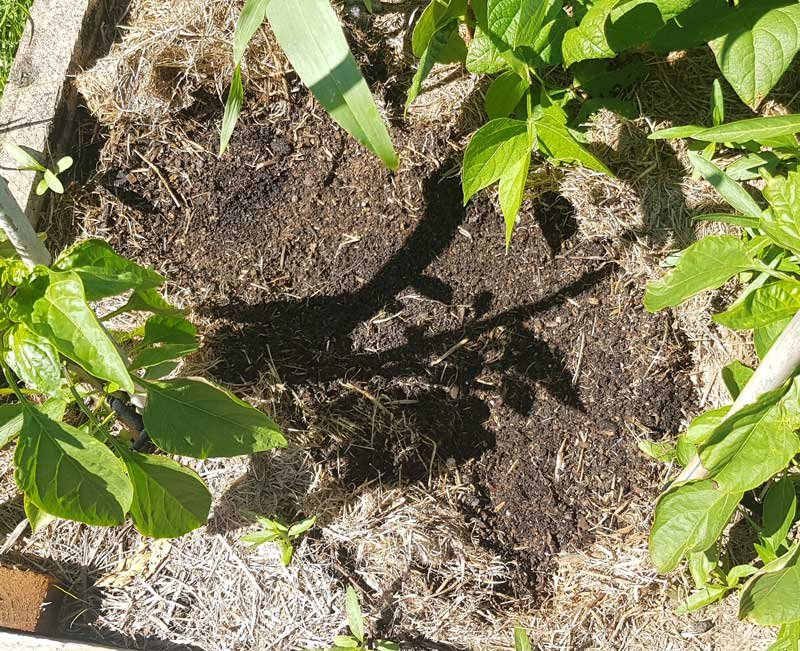Last week I was chatting with some people on Twitter about coriander (aka cilantro). They wanted to know how to keep coriander growing constantly in their garden.
There’s a bit of a belief out there that coriander is difficult to grow. The truth is you can make it a weed in your garden for most of the year if you understand the plant a bit.
Getting to ‘constant coriander’ is a bit of a nirvana state to those of us who love it. Though it probably sounds like some kind of hell to those with a particular variant of the OR6A2 gene. These people have a genetic predisposition to thinking it tastes like soap or dirt. I’ve seen it in action – my partner can sense it straight away and it will make him retch.
Thankfully, I don’t have that predisposition. I think coriander is delicious. I’ll literally eat it by the bunchful. And I love it liberally sprinkled on practically anything.
One project I’m working on in my garden at the moment is achieving constant coriander. That is, coriander just grows and I always have it (except maybe in winter, because nature is like that). It’s still a work in progress, but I know it’s possible.

Coriander lifecycle
In most gardens, coriander goes to seed quickly. There are some ways to slow it down, but your plant’s primary objective in life is to flower and set seed.
This is a hard fact to contend with if you want it to stay leafy and delicious all the time.
While both the seed and the roots can be used in cooking, the bit we love to eat the most are the leaves. These primarily occur during one stage of the plant’s growth – the vegetative stage. You’ll see it there on the right of this image.
This beautiful image by Prof. Dr. Otto Wilhelm Thomé shows the entire plant, from seed to seed. Notice how most of the image is not taken up by those delicious looking leaves? More than half of the image is taken up by pictures of the plant in flower, because those are the adult and reproductive stages of growth, and pretty darn important.
Knowing and accepting that coriander will always go to seed, and that more delicious coriander will appear from that seed, is the first step in achieving constant coriander.
What you need
You need a packet of seeds. Selecting the right seed is important because some varieties bolt to seed faster than others. I use and recommend Kings Seeds’ Slowbolt variety.
Constant coriander in containers is possible, though you’ll probably need to actively collect and sow seed to do it. Go for a large pot, regular potting mix should see you right.
If you are growing in the garden, select an area where you would like to grow coriander. Ideally somewhere that’s usually fairly damp, with as much sun as you can give it. Clear the weeds, break up any big chunks of soil, and if you have it, throw some compost on top.
You’ll also need a sprinkler or a watering can. Water is pretty important to coriander.
Planting coriander
Coriander doesn’t like to be transplanted (that makes it go to seed), so the best thing to do is sow it directly into the garden. The seeds are pretty big so just sprinkle them directly into the soil and cover them with 5mm of soil, grass mulch, or compost.
Here’s the trick though: only sow 20-30 seeds at a time, in just one section of your pot or growing area.
You’re going to need to repeat this trick every 2-3 weeks in a new section so that as the first lot you have sown start to go to seed, the next lot are fresh and leafy.
Coriander takes a while to germinate – about 3 weeks is what it takes in my garden. You’ll need to keep the soil moist by watering once a day to help the seeds get started.


Harvesting coriander
Keep the daily watering up as the coriander is growing. If they get too dry they’ll – you guessed it, go to seed. In the dry heat we’ve had since Christmas, most of my coriander has gone to seed. I have babies and adults right now, no teenagers.
When the plant reaches 20-30cm, it’s ready to start harvesting. Chop it off in bunches about 10cm from the base of the plant. Try to lop off entire plants at a time. Excess can be wrapped in some damp paper towels and placed inside a container in the fridge where it should keep a couple of days.
Leaving 10cm of growth will mean the plant survives and continues to grow, but taking off the majority of its leaves means it has to re-start the vegetative stage again, prolonging the time it takes to get to seed.
Finishing the cycle
The true genius of this plan is that if you buy one packet of seeds, plant them out in one area, and let the plants finish their lifecycle, you’ll have free, fresh coriander forever after that. This is, however, still a theory. I haven’t personally attained this state of nirvana in my own garden.
Despite the fact the seeds are so difficult to get started when you want them to grow, you’ll find they sow themselves really easily in weird spots around your garden, but mostly where you put them to start with.
Letting the plant flower and set seed has an additional benefit too. Coriander is an amazing host for beneficial insects. It is particularly good for attracting ladybugs, which are invaluable if you have an infestation of aphids.
The plants will probably die back in winter. The best thing to do is add a centimeter of compost to your garden and wait. If you’re growing in a pot, you can either harvest your own seed and start again in spring, or do nothing. If you’re lucky, In September or October those pretty green leaves will just start appearing again like magic.
Of course, you can also collect the seed and the roots to use in your cooking as well!


